The Sand Goanna, also known as the Gould’s Goanna (Varanus gouldii).
The species Varanus gouldii is the most widespread and abundant goanna found throughout most of the mainland in Australia.
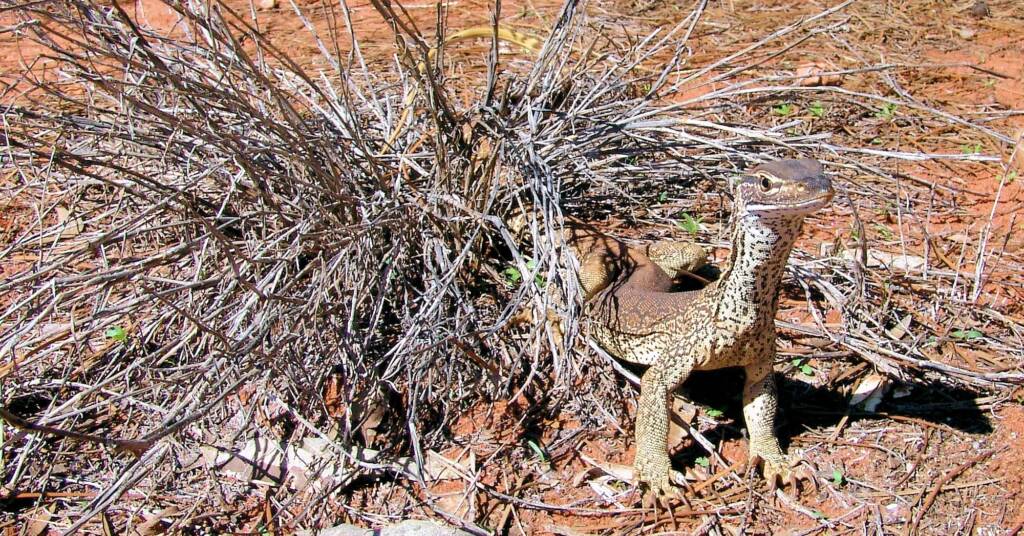
Known as the Sand Goanna or Gould’s Goanna, there are two sub species:
- V g flavirufus occupies the sandy desert region, and is usually paler and generally redder;
- V g gouldii occurs over the remaining regions of Australia;
with both foraging widely over dry open habitats.
Common name
Sand Goanna, Sand Monitor, Gould’s Goanna, Racehorse Goanna.

Sand Goanna (Varanus gouldii), Finke Gorge National Park 
Sand Goanna (Varanus gouldii), Finke Gorge National Park 
Sand Goanna (Varanus gouldii), Finke Gorge National Park 
Sand Goanna (Varanus gouldii), Finke Gorge National Park
In the northern and western part of Australia, the Sand Goanna is active throughout the year, whilst in the south it is inactive during the cooler months. Goannas are good at climbing trees and are also good swimmers.
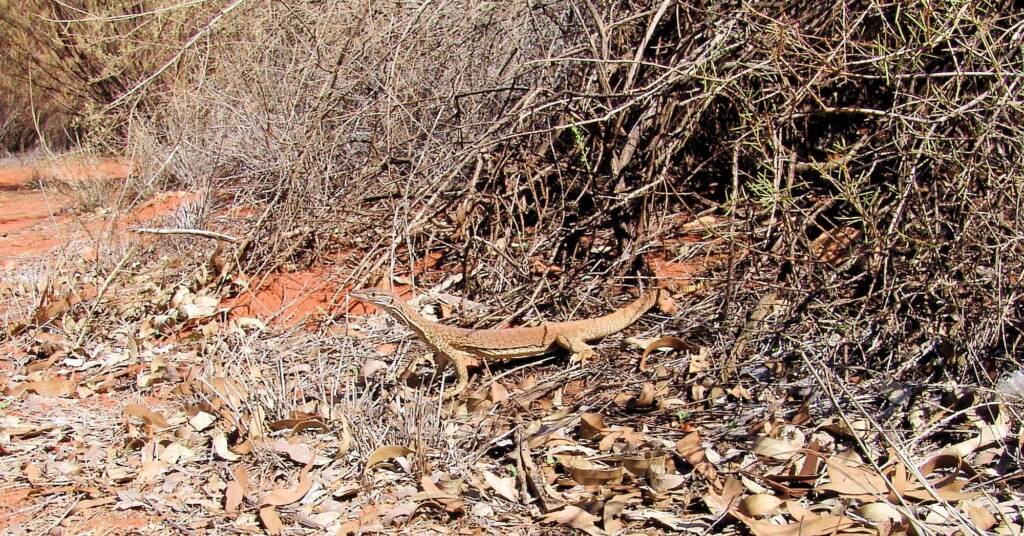
Sand Goanna (Varanus gouldii), Finke Gorge National Park 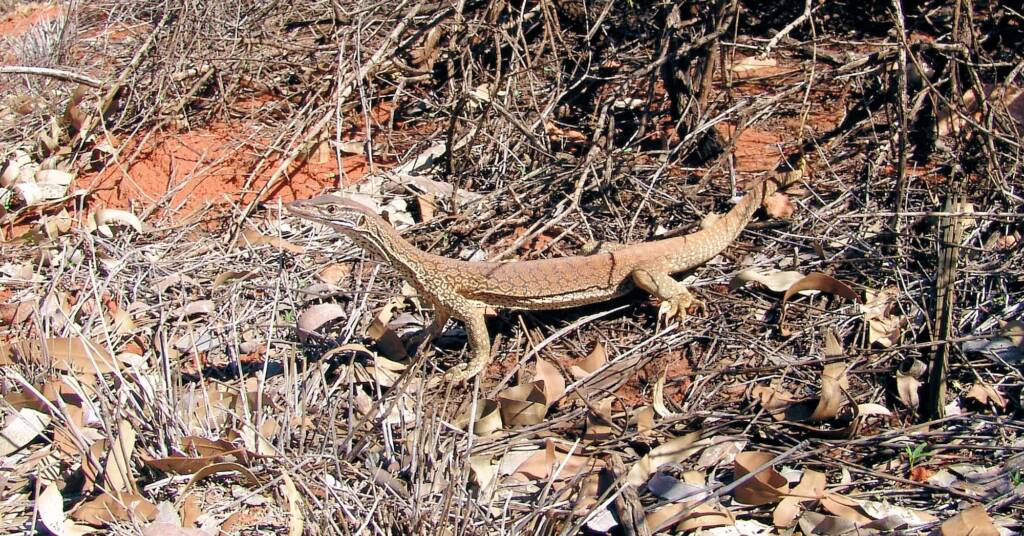
Sand Goanna (Varanus gouldii), Finke Gorge National Park 
Sand Goanna (Varanus gouldii), Finke Gorge National Park 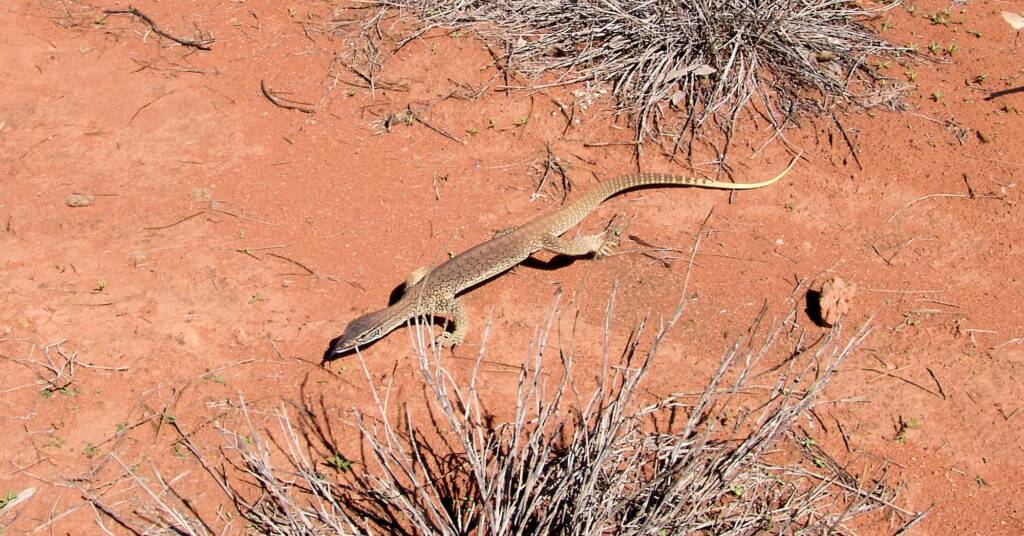
Sand Goanna (Varanus gouldii), Finke Gorge National Park 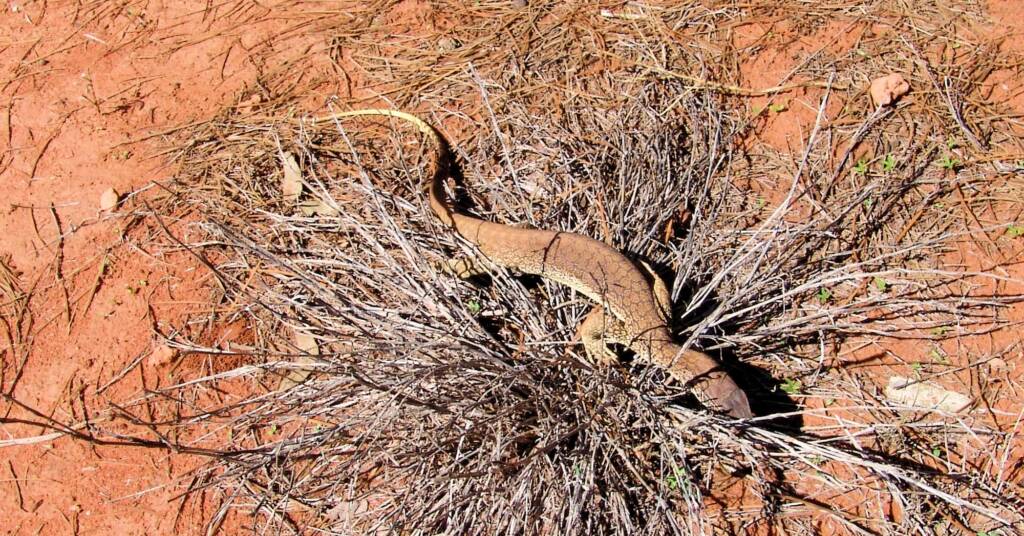
Sand Goanna (Varanus gouldii), Finke Gorge National Park 
Sand Goanna (Varanus gouldii), Finke Gorge National Park 
Sand Goanna (Varanus gouldii), Finke Gorge National Park
In late 2005, University of Melbourne researchers discovered that perenties and goannas and other monitors are venomous.
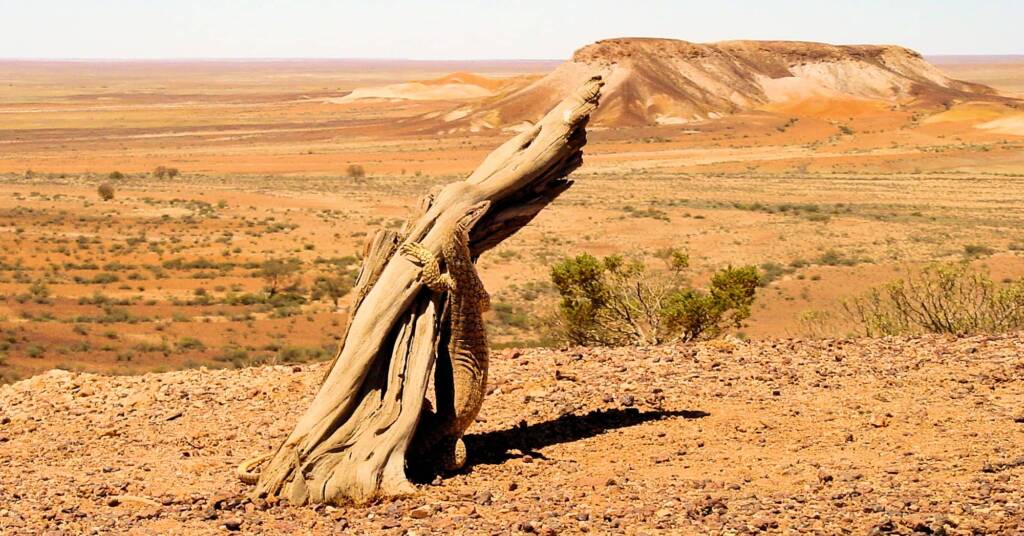
Goanna at Kanku–Breakaways Conservation Park 
Goanna at Kanku–Breakaways Conservation Park 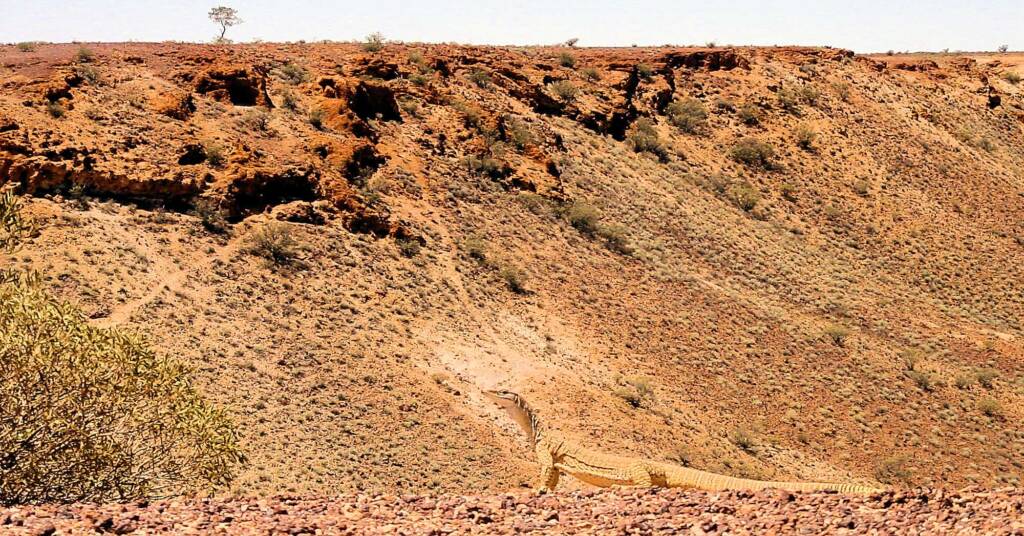
Goanna at Kanku–Breakaways Conservation Park 
Goanna at Kanku–Breakaways Conservation Park
An important bush food for the Indigenous people of Australia, the goanna also feature prominently in Aboriginal mythology and dreamtime stories, as well as being depicted in many pieces of Aboriginal art. Many Indigenous artists have their own unique way of portraying the goanna, whether symbolically as a wavy line and footprints (the tracks left by the goanna), or as either a flattened 2 dimension or 3 dimensional painting. Goannas also appear in carvings.
- Scientific classification
- Kingdom: Animalia
- Phylum: Chordata
- Class: Reptilia
- Order: Squamata
- Family: Varanidae
- Genus: Varanus
- Subgenus: Varanus
- Species: V. gouldii
- Sub Species:
— V. g. flavirufus
— V. g. gouldii - Binomial name: Varanus gouldii
